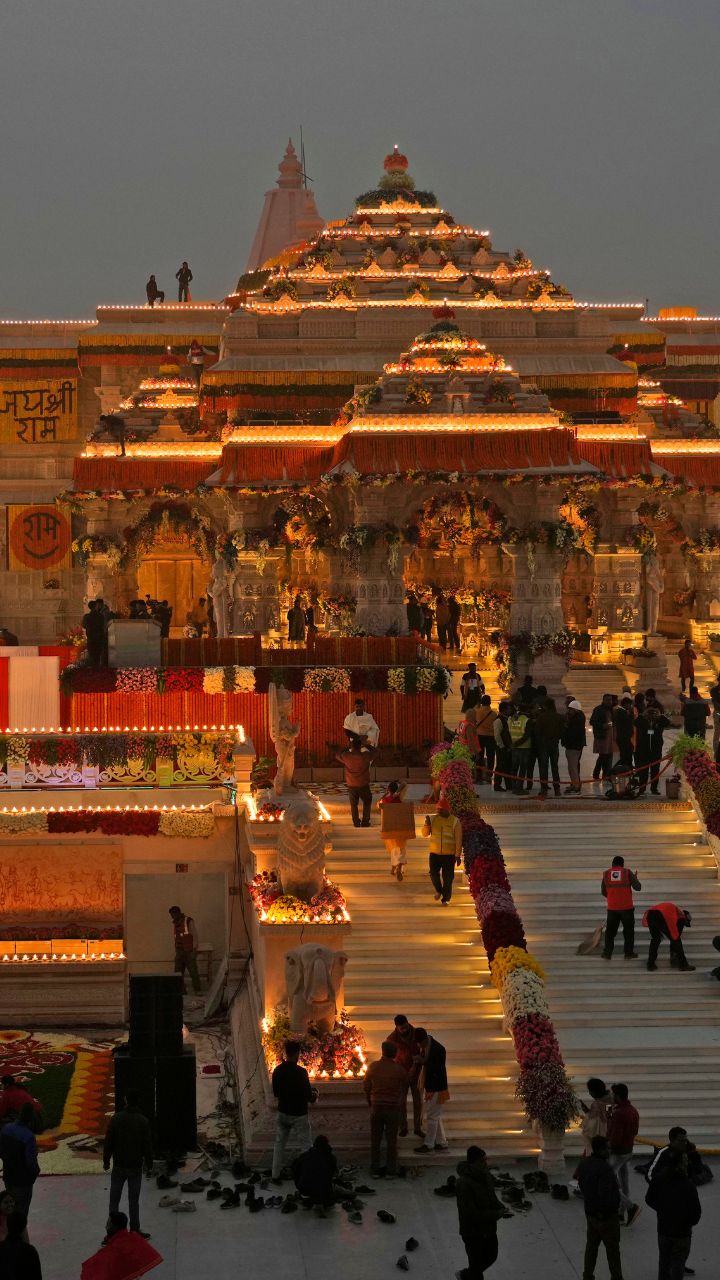
Varanasi
The spiritual capital of India, Varanasi is one of the world's oldest continuously inhabited cities.
Religious Significance
Varanasi is the holiest of the seven sacred cities in Hinduism. The city is known for its ghats, the Kashi Vishwanath Temple, and as a place where many seek moksha.
Best Time to Visit
October to March is ideal when the weather is pleasant and perfect for ghat visits and temple tours.
Must Visit Places
-
Kashi Vishwanath Temple
One of the most famous Hindu temples dedicated to Lord Shiva
-
Dashashwamedh Ghat
Famous for daily Ganga Aarti ceremony
Historical Significance
One of the oldest living cities in the world, Varanasi has been a cultural and religious center for thousands of years.
The city finds mention in ancient texts and has been a seat of learning and culture throughout history.

Ayodhya
Ayodhya is believed to be the birthplace of Lord Rama and is a city of immense religious significance.
Religious Significance
Ayodhya is one of the seven sacred cities in Hinduism and is deeply associated with the epic Ramayana.
Best Time to Visit
November to February is ideal for visiting Ayodhya when the weather is cool and pleasant.
Must Visit Places
-
Ram Mandir
A grand temple dedicated to Lord Rama
-
Saryu River
A sacred river with historical and religious significance
Historical Significance
Ayodhya has been a center of culture and religion for centuries, with mentions in ancient texts and epics.
The city is known for its association with Lord Rama and the Ramayana.

Pashupatinath
Pashupatinath Temple is one of the most sacred Hindu temples dedicated to Lord Shiva, located in Kathmandu, Nepal.
Religious Significance
Pashupatinath Temple is a UNESCO World Heritage Site and a major pilgrimage destination for Hindus.
Best Time to Visit
October to March is ideal for visiting Pashupatinath Temple when the weather is pleasant.
Must Visit Places
-
Pashupatinath Temple
The main temple dedicated to Lord Shiva
-
Bagmati River
A sacred river flowing near the temple
Historical Significance
Pashupatinath Temple has been a center of religious and cultural significance for centuries.
The temple is known for its unique architecture and spiritual importance.

Gangtok
Capital city of Sikkim, known for its scenic beauty and Buddhist monasteries.
Tourism Highlights
Gangtok is known for its stunning Himalayan views, Buddhist monasteries, and vibrant culture.
Best Time to Visit
March to June offers pleasant weather perfect for sightseeing and outdoor activities.
Must Visit Places
-
Nathula Pass
Indo-China border at 14,140 ft
-
Rumtek Monastery
Largest monastery in Sikkim
Historical Significance
Once part of the Buddhist kingdom of Sikkim, Gangtok became a major stopover on the trade route between Tibet and India.
The city has preserved its rich Buddhist heritage while embracing modern development.

Darjeeling
Known for its tea gardens, scenic views, and the Darjeeling Himalayan Railway.
Tourism Highlights
Darjeeling is famous for its tea gardens, scenic views, and the Darjeeling Himalayan Railway.
Best Time to Visit
April to June and September to November are ideal for visiting Darjeeling.
Must Visit Places
-
Tea Gardens
Explore the lush tea estates
-
Darjeeling Himalayan Railway
A UNESCO World Heritage Site
Historical Significance
Darjeeling has a rich colonial history and is known for its British-era architecture and tea industry.
The Darjeeling Himalayan Railway is a testament to the engineering marvels of the colonial era.

Baidyanathdham
One of the twelve Jyotirlingas, Baidyanathdham is a major pilgrimage site for Hindus.
Religious Significance
Baidyanathdham is one of the twelve Jyotirlingas and is considered a sacred site for Hindus.
Best Time to Visit
July to August during the Shravana month is ideal for visiting Baidyanathdham.
Must Visit Places
-
Baidyanath Temple
The main temple dedicated to Lord Shiva
-
Shivganga
A sacred pond near the temple
Historical Significance
Baidyanathdham has been a center of religious and cultural significance for centuries.
The temple is known for its unique architecture and spiritual importance.